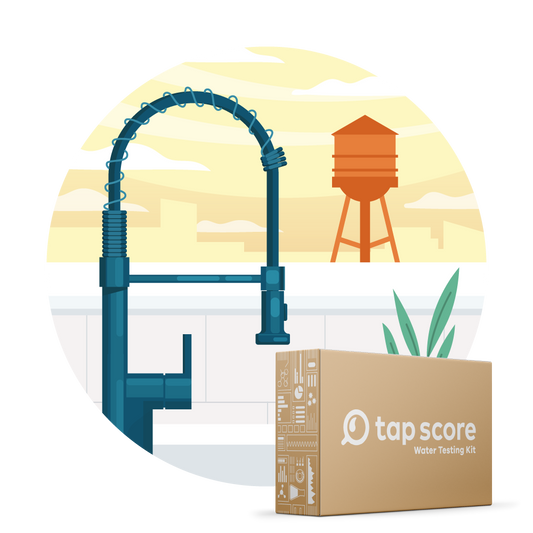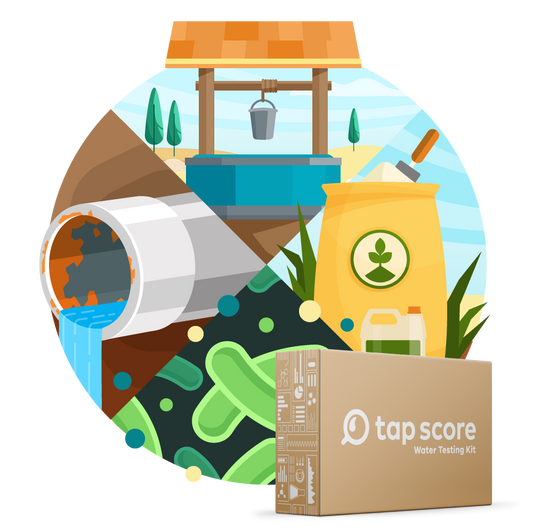
Phthalates and Drinking Water
Our blog is written by real experts— not AI. Each guide is carefully reviewed and updated based on the latest research. Plus, with no affiliate links, you can count on unbiased insights you can trust.
What are phthalates and are they dangerous?
You can’t smell them, taste them, or perhaps even pronounce them, but phthalates are everywhere.
Hint: They are pronounced “thal-ates.” In this newest Tips for Taps article, we investigate:
- What are phthalates?
- How do phthalates get into drinking water?
- Are phthalates a human health risk?
- How to treat phthalates in drinking water?
What Are Phthalates?
A group of chemicals often called “plasticizers,” phthalates are used to make plastics more flexible and less prone to breaking. They may also be used as solvents for other materials, as well as are used in many fragrances and perfumes.
As they have many practical applications, phthalates are produced in huge volumes. In fact, as of 2006, over 470 million pounds of phthalates were produced per year.
Phthalates are frequently found in polyvinyl chloride (PVC) plastics, which are used to make things such as water piping, garden hoses, medical tubing, packaging film, plastic food wrap, and even children’s toys. Phthalates are also ubiquitously found in adhesives, detergents, automotive plastics, personal-care products (soap, shampoo, nail polish, etc) and cosmetics.
In other words, phthalates are all around us. Therefore, due to leaching, weathering and disintegration, they can (and do) make it into many drinking water supplies.
Phthalates and Drinking Water:
Whether from industrial production / waste contamination or from pesticides sprayed on fruits and veggies, there are numerous ways phthalates can end up in your water.
As hard as they are to spell, phthalates can also be hard to detect without testing your water in a laboratory. Colorless, odorless and often in small concentrations, phthalates have no at-home or DIY testing options. To analyze for phthalates it must be done in a lab.
Tip for your tap: If you are concerned about phthalates, you can get your water tested:
Plastics in Water Test: This is a high-precision laboratory water test for common various phthalates. Just like every Tap Score water quality test, this testing package includes unbiased and personalized treatment recommendations based on what is found in your water. Our team of treatment experts, chemists, and water quality engineers can walk you through how to treat your drinking water so that you know that what you are drinking is safe.
While phthalates have been found in tap water, they have–as you may have guessed– also been detected in bottled water, albeit at very low levels. While studies suggest that these often as “acceptable” (<0.006 ppm) levels, because research is ongoing, studies also continue.
For a more in-depth assessment of bottled waters, take a look at this article: Bottled Water-When Is It Worth It?
Are Phthalates Harmful to Your Health?
There are numerous routes of exposure, some of the most common ways include:
- Eating and drinking foods that have been in contact with products containing phthalates
- Breathing in air that contains phthalate vapor/dust with phthalate particles
Phthalates are readily absorbed into the human body (whether it be via ingestion or inhalation) and are quickly converted to their respective metabolites. They tend to pass out of the body quickly in urine and feces. However, they can can a so interact with each other and increase the exposure effect.
The health effects of phthalate exposure are not fully known. While they are still being researched and studied, it is known that some phthalates like DEHP are endocrine disruptors and are anticipated to be human carcinogens.
How Do I Protect Myself Against Phthalates?
Here are a few steps you can take to limit your phthalate exposure:
- Invest in a good water filter. Granular activated carbon (GAC) filters or nano-filtration systems filters will remove/reduce DEHP, a phthalate used in water piping. For a comprehensive guide to water filters, look here: Top 5 Most Popular Water Filtration Technologies For Homes.
- Eat and drink organic. As phthalates are used in pesticides and can be found in sewage that is used may conventional agricultural practices.
- Avoid recycling codes 3 and 7. Plastic products with those codes (especially those containing food and beverages) often contain phthalates, which can in turn leach into your food. Opt for containers with recycling codes 1, 2, or 5.
- Read labels. There are a multitude of phthalate compounds. Some of the most common phthalate compounds to keep an eye out for are:
BBP: butyl benzyl phthalate
DBP: di-n-butyl phthalate
DEP: diethyl phthalate
DiDP: di-isodecyl phthalate
DiNP: di-isononyll phthalate
DnHP: di-n- hexyl phthalate
DnOP: di-n-octyl phthalate
More questions? We’re standing by. Reach out anytime to support@mytapscore.com and our team of chemists, water quality engineers, and treatment experts will be happy to help!
Article Sources
▾https://www.health.state.mn.us/communities/environment/risk/docs/guidance/gw/phthalateinosheet.pdf
https://health.westchestergov.com/bisphenol-a-and-phthalates
https://www.huffpost.com/entry/phthalates-health_b_2464248
https://www.foodpackagingforum.org/news/phthalates-in-bottled-water
https://wwwn.cdc.gov/TSP/substances/ToxChemicalListing.aspx?toxid=41
https://www.chemicalsafetyfacts.org/phthalates/
https://www.ncbi.nlm.nih.gov/pmc/articles/PMC2901120/
https://www.ncbi.nlm.nih.gov/pubmed/30796663
https://www.epa.gov/assessing-and-managing-chemicals-under-tsca/phthalates
https://www.fda.gov/cosmetics/cosmetic-ingredients/phthalates









